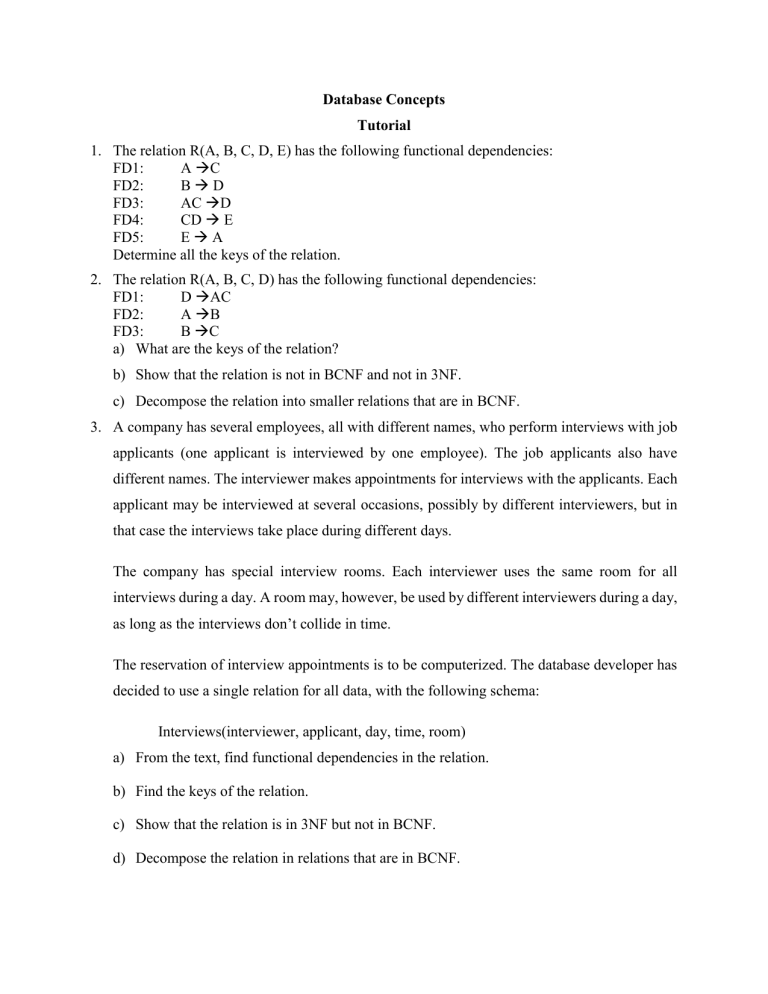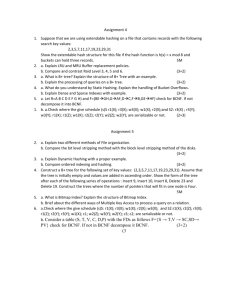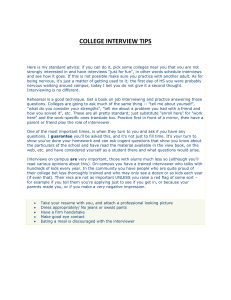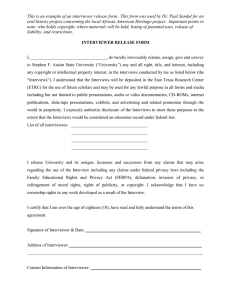
Database Concepts Tutorial 1. The relation R(A, B, C, D, E) has the following functional dependencies: FD1: A C FD2: BD FD3: AC D FD4: CD E FD5: EA Determine all the keys of the relation. 2. The relation R(A, B, C, D) has the following functional dependencies: FD1: D AC FD2: A B FD3: B C a) What are the keys of the relation? b) Show that the relation is not in BCNF and not in 3NF. c) Decompose the relation into smaller relations that are in BCNF. 3. A company has several employees, all with different names, who perform interviews with job applicants (one applicant is interviewed by one employee). The job applicants also have different names. The interviewer makes appointments for interviews with the applicants. Each applicant may be interviewed at several occasions, possibly by different interviewers, but in that case the interviews take place during different days. The company has special interview rooms. Each interviewer uses the same room for all interviews during a day. A room may, however, be used by different interviewers during a day, as long as the interviews don’t collide in time. The reservation of interview appointments is to be computerized. The database developer has decided to use a single relation for all data, with the following schema: Interviews(interviewer, applicant, day, time, room) a) From the text, find functional dependencies in the relation. b) Find the keys of the relation. c) Show that the relation is in 3NF but not in BCNF. d) Decompose the relation in relations that are in BCNF. e) Extra assignment: draw an E/R diagram that describes the system. Try to incorporate all dependencies from the text in the diagram (not easy). 4. We wish to develop a database to keep track of persons, their children and their cars. For this purpose, we will use the following relation: PersonData(pNbr, pName, pAddress, cNbr, cName, cAddress, aLic, aMake) pNbr, pName, pAddress is the person number, name and address of a person. cNbr, cName, cAddress is the corresponding information for a child. Each person has exactly one address. aLic, aMake is the license number and make of a car. A car may be owned by more than one person. a) What are the functional dependencies in this relation? b) Find the keys of the relation and show that the relation is not in BCNF. c) Decompose the relation into relations that are in BCNF.



